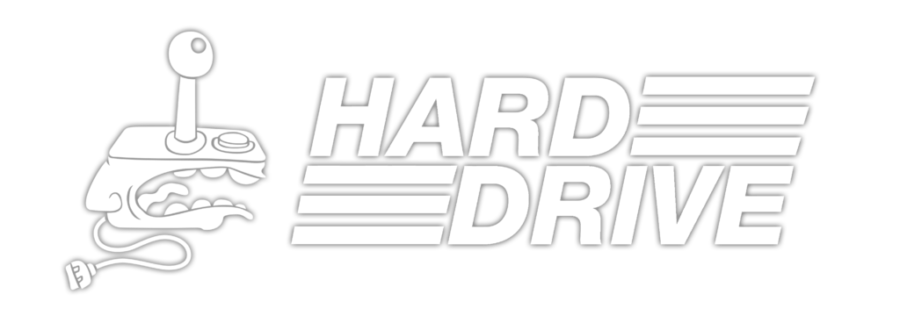If your first time playing Yu-Gi-Oh was at a local card shop surrounded by twitchy pro players and the sweet fumes of so much cardboard, turn back now. This list is not for you. This list is for those who sit, right now, in the grass, mulch, and dirt, on the steps of plastic slides and at scalding hot steel picnic tables, cards in hand, blissfully ignoring the basic rules and strategies of Yu-Gi-Oh. That’s right, I’m talking about the playground meta.
In the same way a newly hatched turtle knows instinctively to crawl toward the ocean, nascent Yu-Gi-Oh players are compelled to gather their precious, janky first decks at the playground, school bus, or cafeteria. It is a safe space, free from netdecking, from end boards of omni-negates, and from binders loaded with actually decent, tradeable cards and not just page after page of chaff. In playground Yu-Gi-Oh, there was no ban list. Rule disputes were decided by whoever sounded more confident. Everything was playable. Venom was playable. Aliens were playable. Cloudians were playable – and could even be a meta threat if your opponent was playing a 60-card Hail Mary deck of every Yu-Gi-Oh card they owned. It was, put simply, a different, arguably better time.
Today, I’ll be ranking the top 25 cards that defined the playground meta of our childhoods.
#25: Solar Flare Dragon(s)
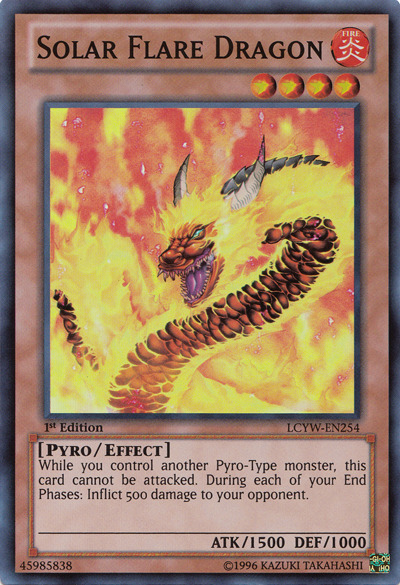 Starting off our list of playground powerhouses, we have one of the nastiest combo cards to ever hit the mulch: Solar Flare Dragon. A Level 4 Pyro-type monster that burns your opponent for 500 at the end of your turn, Solar Flare Dragon is a decent beast to throw out for some free damage, and its 1500 ATK is nothing to scoff at during a time when your opponent could very well be running something like Cyber Falcon or Bean Soldier for reasons known only to God. The real trouble comes when you or your opponent manages to play a second Solar Flare Dragon, as both say they can’t be attacked if you control another Pyro monster.
Starting off our list of playground powerhouses, we have one of the nastiest combo cards to ever hit the mulch: Solar Flare Dragon. A Level 4 Pyro-type monster that burns your opponent for 500 at the end of your turn, Solar Flare Dragon is a decent beast to throw out for some free damage, and its 1500 ATK is nothing to scoff at during a time when your opponent could very well be running something like Cyber Falcon or Bean Soldier for reasons known only to God. The real trouble comes when you or your opponent manages to play a second Solar Flare Dragon, as both say they can’t be attacked if you control another Pyro monster.
That’s right: it’s baby’s first Wattlock, and it’ll burn you for 1000 life points every turn until you are as toasty as a metal slide in the summer.
#24: Mr. Volcano

Mr. Volcano is on this list less for his actual presence in our early Yu-Gi-Oh games and more for what he represents: god-awful normal monsters that we played because they look cool and we liked them. Mr. Volcano is iconic in my mind, and for prehistoric Yu-Gi-Oh, he’s not even half-bad for a Level 5 monster. Plus, his art is dope, and at a young age the art was half the reason to play a card. See also: Launcher Spider.
#23: Dian Keto the Cure Master

Umm free life points? Are you kidding me? Run ‘em at three, baby!
#22: Scrap-Iron Scarecrow

This one is a little after my time, but Scrap-Iron Scarecrow was apparently meta-defining for playground duelists. If you were lucky, you had maybe one Mirror Force in your deck, which left room for a stew of lesser battle traps like Negate Attack, Draining Shield, and even Fairy Box. Part of what set Scrap-Iron Scarecrow above the rest however was its ability to set itself again instead of being sent to the graveyard. You know what that means: infinite battle traps during your opponent’s turn. If anyone tried to point out that the first rule of trap cards is they can’t be activated the same turn they’re set, you could just tell them you saw Duncan using it that way, and Duncan has the shiniest Cosmo Queen this school has ever seen.
#21: Nightmare Wheel
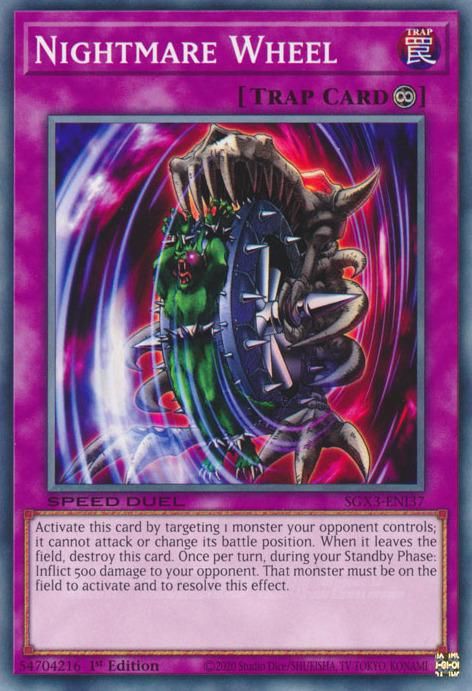
Nightmare Wheel, along with ‘burn-a-turn’ cards like Mask of Dispel and Mask of the Accursed, was devastating on grade-school decks for one simple reason: no one would play backrow removal to save their life. Not that it wasn’t available, mind you; early starter decks were packing actual meta threats like Heavy Storm and Giant Trunade, and Dust Tornado has been around since the dawn of time. It’s just no one played them, OR they had exactly one copy of MST they would transfer from deck to deck like a lucky rabbit’s foot. You just had to pray you didn’t end up getting hit with one of these and dying the world’s slowest death at 500 life points a turn.
#20: Mystical Space Typhoon
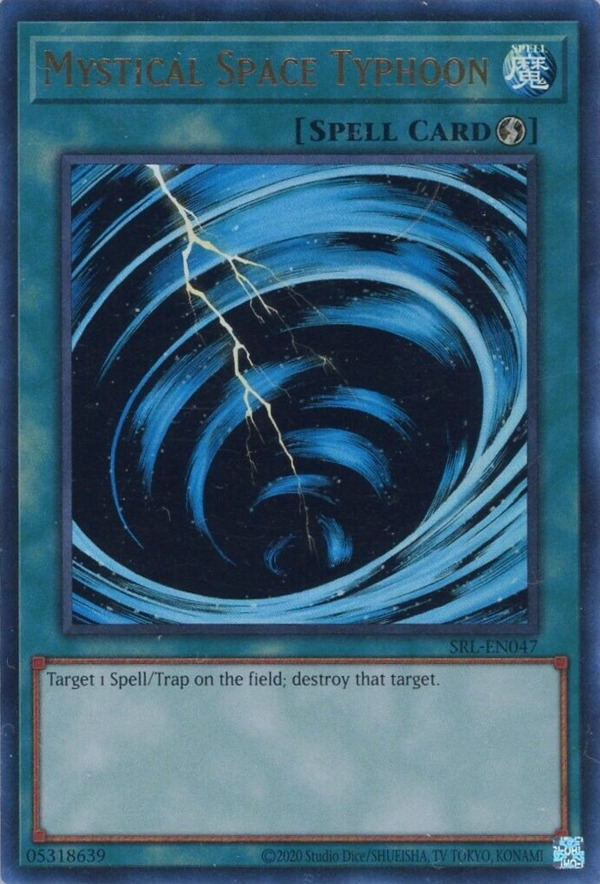
Speaking of backrow removal, at #20 we have the legendary Mystical Space Typhoon. Now, I know what you’re thinking: MST was a staple card in nearly every competitive Yu-Gi-Oh deck for more than a decade after its release. Well, it happened to be integral to the recess meta too, especially once you grew up a little and started facing decks that weren’t just 60-card vanilla beatdowns. MST was actually better in playground format since along with removal, it could also negate, and to anyone who claims otherwise, I ask you: how can the effect of the card I just destroyed still go off? Is it a graveyard effect? No? Then shut up.
#19: Space Mambo, Neo the Magic Swordsman, Battle Ox, Darkfire Soldier #1, Darkfire Soldier #2, Warrior Dai Grepher, Plus Any and Every Other 1700 Beater We Could Find
 While pro players were lusting after tournament packs for a chance to glimpse Mechanicalchaser’s unprecedented 1850 ATK, we were stuffing our decks with 1700 beaters of every shape and size. It was a strange time, as if for a period of a few years everyone’s only 1800 ATK monster was 7 Colored Fish– a Level 4 boss monster to be feared, capable of turning the tide on its own. Still, the rest of your deck needs to be filled with something, and if it wasn’t awful Ritual monsters or a single, useless copy of Polymerization, it was more vanilla beaters.
While pro players were lusting after tournament packs for a chance to glimpse Mechanicalchaser’s unprecedented 1850 ATK, we were stuffing our decks with 1700 beaters of every shape and size. It was a strange time, as if for a period of a few years everyone’s only 1800 ATK monster was 7 Colored Fish– a Level 4 boss monster to be feared, capable of turning the tide on its own. Still, the rest of your deck needs to be filled with something, and if it wasn’t awful Ritual monsters or a single, useless copy of Polymerization, it was more vanilla beaters.
#18: Share the Pain
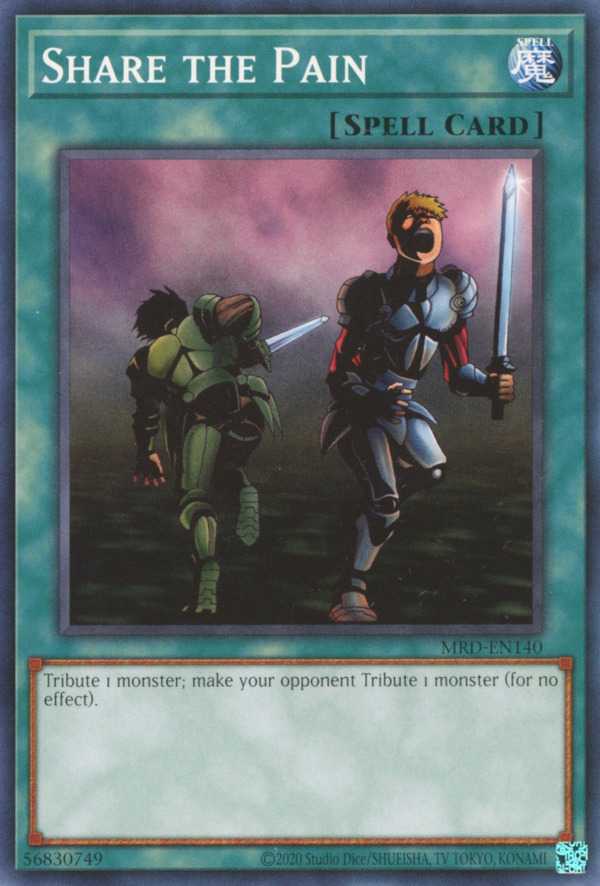
Share the Pain is an amazing card for the playground, on account of it not specifying that the first monster tributed needs to be your own. When you’re eight years old and overconfident about the rules of Yu-Gi-Oh, you 100% could and would get away with using this Spell to make your opponent tribute two monsters, and you’d do it again. “Share the Pain” my ass, I attack with 7 Colored Fish for game.
#17: Convulsion of Nature
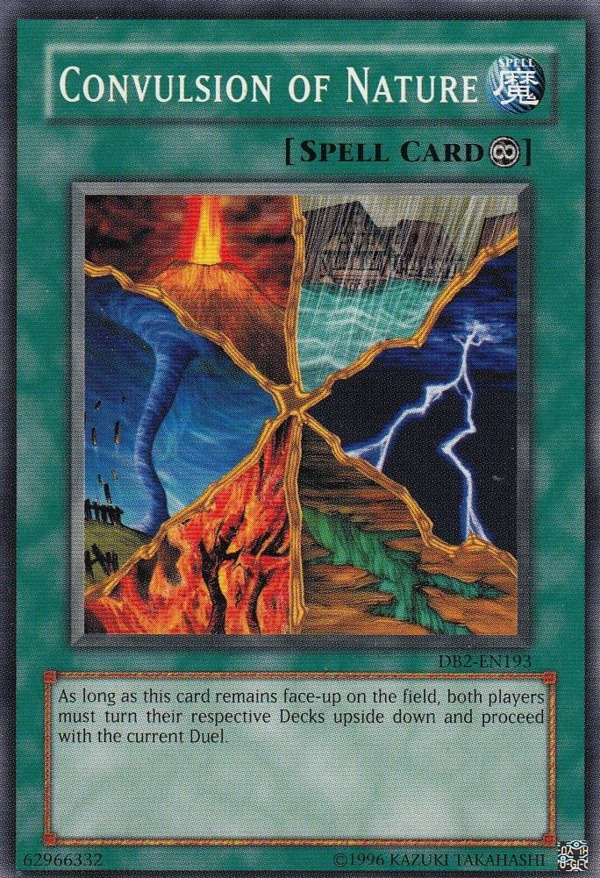
To be clear, this card was not good. Did it have its niche uses? Maybe. Would you splash it into every deck because its effect was so weird? Absolutely. You were the coolest kid in the cafeteria if you were the first one to show your friends Convulsion of Nature in action: like the first pro player who built a deck that could use Arcana Force XXI – The World’s turn skip effect, except the payoff here was that you got to do something even more fun than winning a Yu-Gi-Oh duel: flipping your decks upside down and playing like nothing had changed.
#16: Infinite Cards
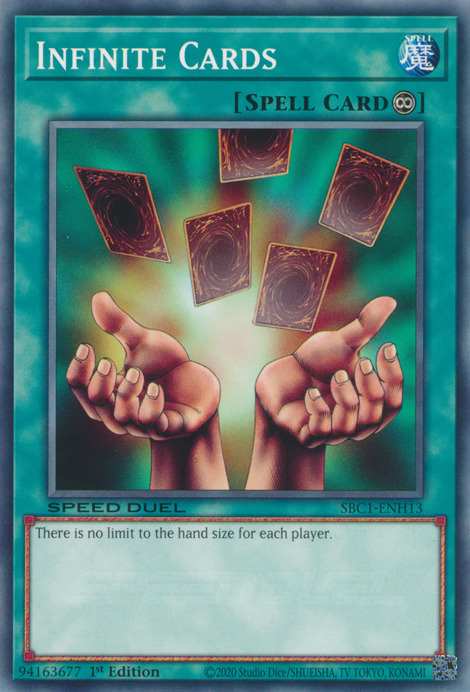
Assuming you don’t read it, Infinite Cards lets you draw your entire deck, which is such a busted effect I’m surprised Konami didn’t ban the card. Everyone argues about whether Maxx “C” is healthy for the game, but a Spell that lets you go +infinite in card advantage is okay? Truly, I don’t understand modern Yu-Gi-Oh players.
#15: Marshmallon

Okay, now we’re getting into some seriously nasty cards. If you played Marshmallon on school grounds, your deck was borderline toxic. The moment he hit the asphalt nothing could get rid of this guy. A thoughtful player might have one or two good cards for monster removal among all the other jank, but it was a 50-50 as to whether you already wasted your Fissure or Dark Hole on something else. Marshmallon is infinitely better than Spirit Reaper (which saw actual meta play) because you took 1000 damage (that’s a whole Dian Keto right there) just for crashing into it the first time, and then all you could do was stare at that taunting, silly smile for the rest of the duel… or until the teacher pulled you aside because you were being too loud in the library.
#14: Exodia
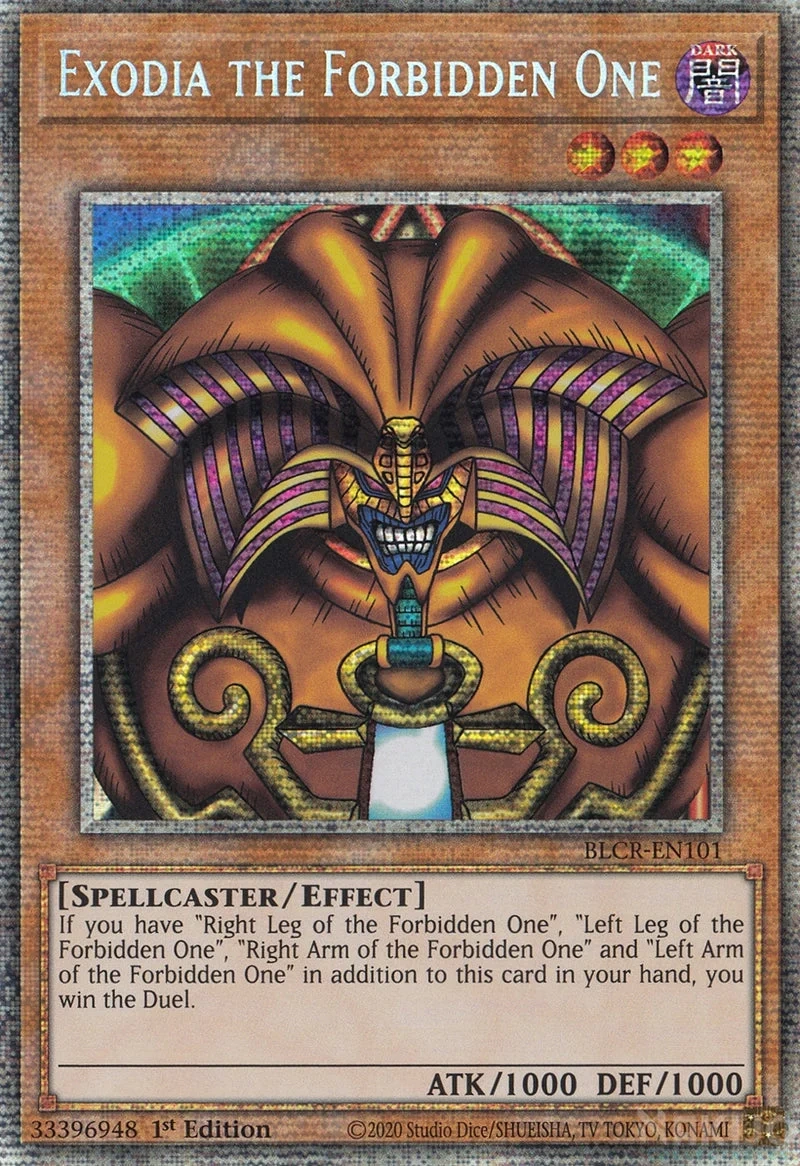
Look, if you were lucky enough to have all the pieces, you played all the pieces. Those were the rules. Not to mention properly shuffling your cards was something of a learned art, so chances were good Exodia was just chilling in your deck all stacked up, like the little man in the jack-in-a-box waiting to be freed.
#13: Megamorph
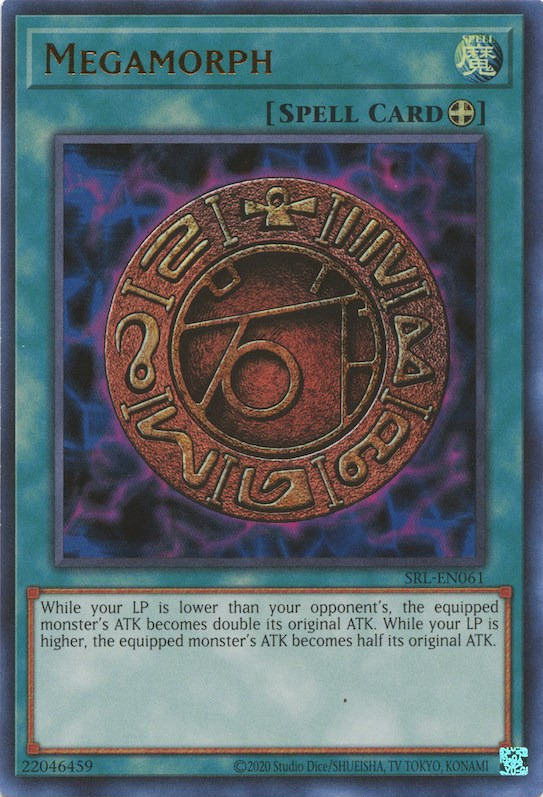
Everyone remembers their ultimate Equip card, their ace in the hole. No, not Axe of Despair: Megamorph. I’m sorry, double the attack of a monster? Konami, do you know what that means in a deck full of 1700 beaters? We’re talking a 3400 ATK Space Mambo that beats over Blue-Eyes without thinking twice. Sure, it came with the caveat that your life points had to be lower than your opponent’s, but that never actually came up because you were always losing anyway.
#12: Insect Barrier + DNA Surgery

You bastard. Screw you.
#11: Final Countdown
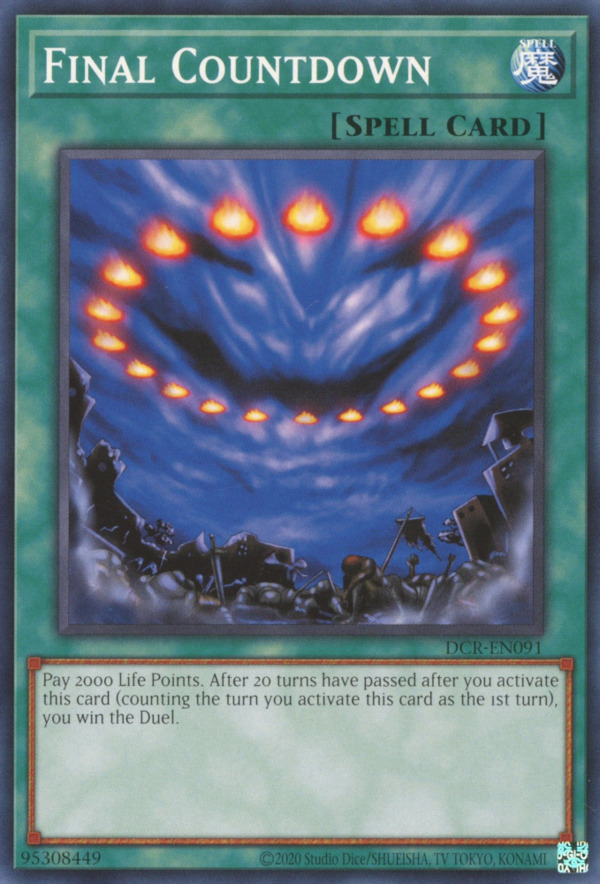
Yu-Gi-Oh games these days don’t usually last for more than three turns. The same could not be said in the golden days of our youth, where decking out happened more than you’d think, even when playing with only 4000 life points. Final Countdown, a card that lets you win in a measly 20 turns, will never, ever go off in a modern game (as long as Mystic Mine stays on the ban list where it belongs), but it promised salvation down in the mulch if you could just hold out a little longer.
#10: Great Maju Garzett
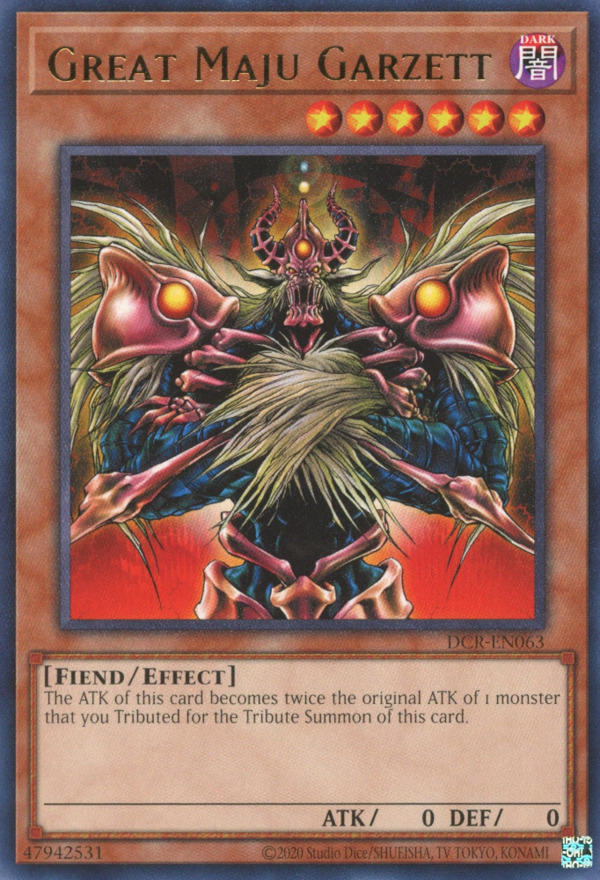
What did I say about doubling a monster’s attack? Great Maju Garzett gets attack equal to twice that of the tributed monster, meaning not only could he turn your Darkfire Soldier #1 into Darkfire Soldier #Won, he could become the supersized version of any boss monster you had in play. A classic case of sick art, sicker effect, and beloved among children everywhere.
#9: Raging Flame Sprite
![]()
As soon as Raging Flame Sprite hits the cheap, heavily-creased paper playmat, you have one of two options: kill it immediately, or die to it in two turns. This unassuming 100 ATK Pyro monster can attack directly, a non-issue if it didn’t also gain 1000 ATK every time it did so. That is insane. Pair it with something like Swords of Revealing Light, and it’s an instant win. Competitive Yu-Gi-Oh had the ban list, while playground Yu-Gi-Oh had “We have all come together and decided you cannot play Raging Flame Sprite anymore, Duncan.”
#8: Dark Master
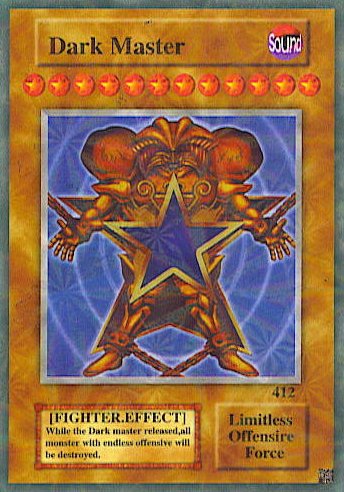
Either you played this obviously fake Yu-Gi-Oh card thinking (hoping) it was real, or you were the one who had to break your best friend’s heart and tell them the packs their dad brought back on his trip to Germany were all fake. Maybe you took pity and let them play the fakes anyway, or you were the one pitied. It didn’t matter much either way since Dark Master is pretty terrible, even with his attack stat of “limitless offensire force”, but his near-ubiquitous presence on the playground justifies a high spot on this list.
#7: Mechanical Hound
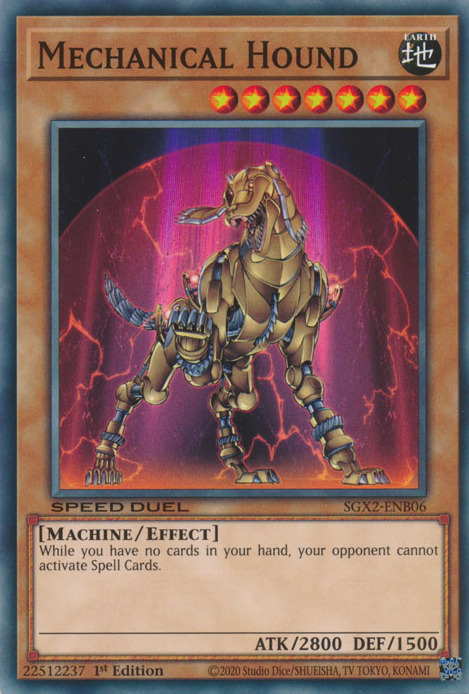
Along with its decent stat-line, Mechanical Hound has the ability to completely lock your opponent out of activating Spells while you have no cards in your hand. Now, read that again. Really think about that condition, “while you have no cards in your hand”. Let your brain momentarily walk the neural pathways my 3rd grader brain walked, and you’ll begin to see how Mechanical Hound was ripe for abuse. That’s right, its effect is always active if you just put your cards on the table and play with “no cards in your hand”. A loophole so evil it’s brilliant. To be fair, this is exactly the kind of nonsense Yugi would pull.
#6: The Egyptian God Cards

I haven’t the slightest idea where people were getting these enticingly-colored Yu-Gi-Oh legends from, but as I grew older, seeing the Egyptian God cards in their original blue, red, and yellow backs in binders became a common experience. Sometimes they were even played, and you can bet your Jinzo they had every last busted effect from the anime you could remember.
#5: Prohibition
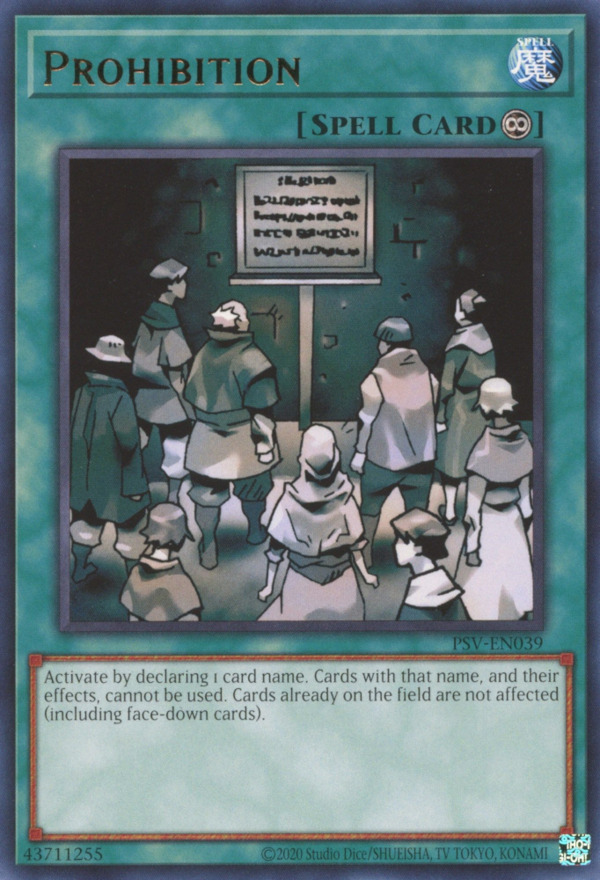
Under the right circumstances, Prohibition was the ideal floodgate against that one extremely annoying or busted card your opponent insisted on using in all their decks. Perhaps it was one of the cards on this list. As long as you had tasted defeat at the hands of that card before, Prohibition could nip it in the bud for your next game. Bye-bye, Raging Flame Sprite.
#4: The Fiend Megacyber

This card goes so hard. I remember just staring in awe when I first encountered it. The art is so distinct and flashy, even for a Yu-Gi-Oh card. In a format blissfully short on cards that special summoned, The Fiend Megacyber was practically Cyber Dragon, three whole years before that card would release. Forgive me for getting a little personal, but my journalistic integrity compels me to disclose that I love him very much.
#3: Patrician of Darkness
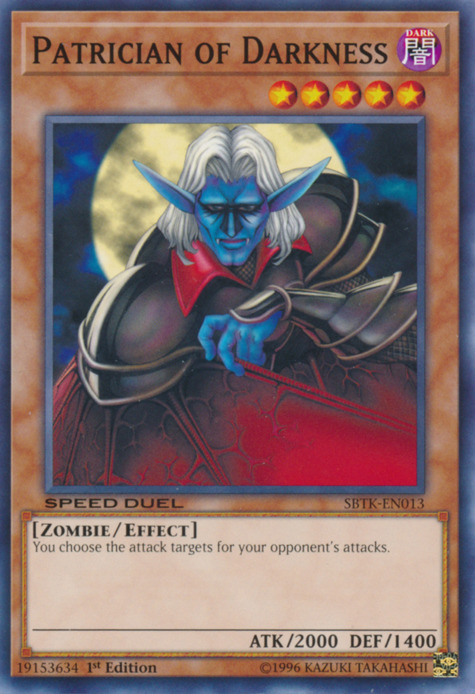
I wonder if the person at Konami who wrote the words “You choose the attack targets for your opponent’s attacks” knew what they were doing. They must have known how we would interpret this effect, right? Patrician of Darkness was a total playground staple, through and through. It single-handedly ended games and probably friendships. Reader, I ask you, what constitutes a valid attack target for your opponent’s attacks? Your monsters? Their monsters? Their life points? The moon? It was the Wild West playing this card back in the day, and Patrician was how the West was won.
#2: Tip Card
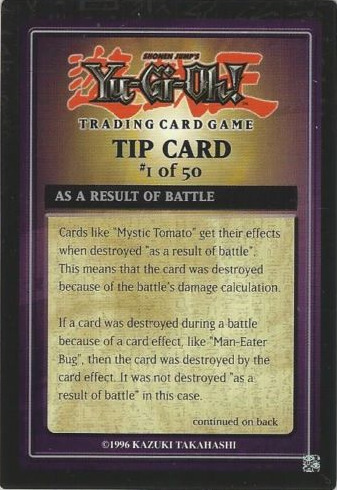
I was never sure what these did but there were an awful lot of kids playing them.
#1: Exchange

Exchange is possibly the worst card used for the greatest evil in Yu-Gi-Oh. It seems mundane at first. Oof, you got me! Alright, take a card from my hand, I guess I’ll take your Bean Soldier since it’s the only card you’ve got. Damn haha, you took my Jinzo! You summon Jinzo, attack for game? I don’t have a quick-play Spell so gg I guess, you win. Hey, where are you going? Duncan, you still have my Jinzo. Duncan, stop. No. No, that can’t be how it works. Right? You don’t get to keep the cards you exchange. Yeah haha, I guess you would know better Duncan, you have that shiny Cosmo Queen. Haha. Can I have my Jinzo back though? This is actually my big brother’s deck.
Duncan? Duncan? Can I please have my Jinzo. Duncan?
Can I please have my Jinzo?
